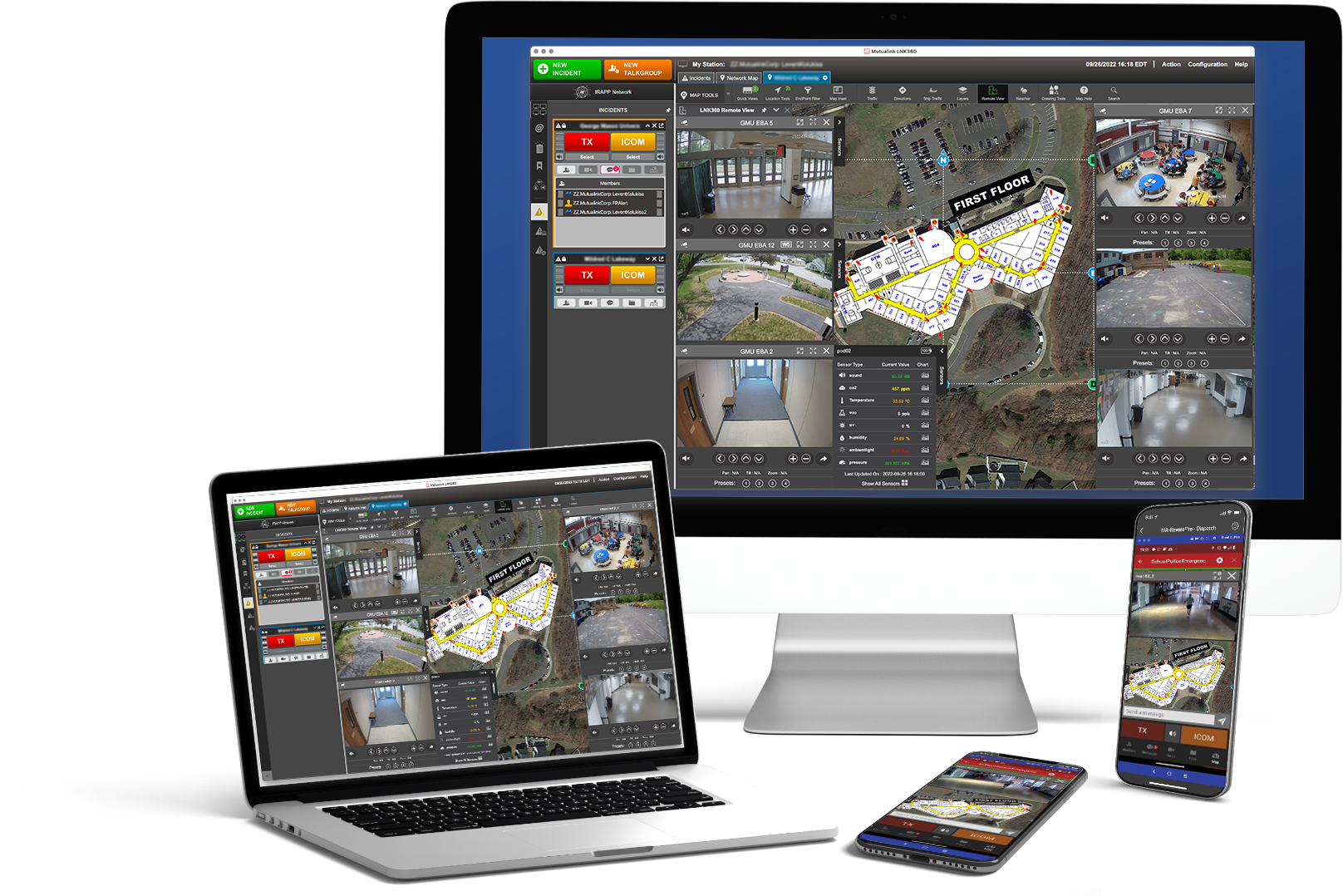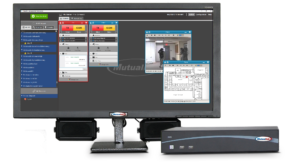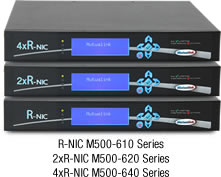Challenges for Casino Security
For optimal security, casinos must protect employees, visitors and the community while ensuring regulatory compliance and maintaining privacy and security.
Solution
The Atlantic City Police Department (ACPD) implemented Mutualink’s interoperability solution for radio bridging and real-time video sharing. They use the Interoperability Workstation (IWS) and Radio and Video Network Interface Controllers (RNIC and VNIC). Telephony Network Interface Controllers (TNICs) connect incoming and outgoing landline and cell phone calls for seamless LMR to LTE communications.
As more community partners (Atlantic County Office of Emergency Preparedness, Atlantic City High School, all Atlantic City casinos, New Jersey Division of Gaming Enforcement, New Jersey Office of Homeland Security and Preparedness, New Jersey State Police, AtlantiCare Regional Medical Center) installed Mutualink’s solution, a true community interoperability network formed. Later, the Convention Center and Boardwalk Hall signed onto the network.
Benefits
Atlantic City casinos improved security and can better communicate with one another and with public safety agencies while achieving regulatory compliance. With a comprehensive end-to-end approach to communications, Mutualink’s interoperability platform is highly secure, leading to better law enforcement communications. Using Mutualink’s interoperability solution, Atlantic City stands as an example of ideal pubic-private collaboration that respects the sovereignty of each partner’s communication assets.

- Improved communication with law enforcement
- Seamless radio and video interoperability
- Quicker and better informed response
Market: Commercial Casino Security
Location: Atlantic City
FEATURED PRODUCTS

IWS Desktop Interoperability



“What’s great about the Mutualink system is not only can I see the feeds of casino-owned cameras in real-time, I can return the favor and share my camera feeds with them,”
– ACPD Deputy Chief James Sarkos in 2016 interview with Homeland Preparedness News

Atlantic City Summer Concert
PROVEN & RELIABLE
“This new capability makes our facility even more secure and efficient as we prepare for the Miss America Pageant and other high-profile events.”
– Fran Rodowicz, General Manager, Boardwalk Hall 2014

“Mutualink gives us a cost effective IP-based technology to keep our city safe, bridging radio and video with the casinos when they need to keep us informed.”
NO NEED FOR NEW EQUIPMENT
Mutualink works with virtually any two-way radio system, PTT applications, telephone systems and analog and digital video systems.
Atlantic City Stays Safe with Interoperability Technology
Atlantic City’s economy ebbs and flows with casino cycles. Tourist attraction to the area also depends on the crime rate, which rises during economic slow times. So public agencies and private enterprise in the area sought an affordable solution for managing and responding to incidents. In 2009, they found it. Since then, Mutualink has played a strategic role.
As Atlantic City Police Department rolls out new initiatives, they know that Mutualink will help bridge otherwise incompatible technologies. For example, in 2016, Atlantic City installed 158 city-owned security cameras across the boardwalk. Mutualink leverages this investment by enabling the police department to share this video as needed. Moreover, with the opening of the Atlantic City Headquarters for Intelligence Logistics Electronic Surveillance, or ACHILES, the screens are monitored full time by retired officers.
The city uses Mutualink to provide secure communications during events such as summer concerts, Miss America Competitions and the 70-mile Atlantic City Ironman Triathlon.
Public-Private Partnership with No Need for MOUs
With over 27 million visitors a year, Atlantic City is one of the most popular tourist destinations in the United States. So the need for cooperation among the casinos, event venues, law enforcement and other first responders is clear. Often, the necessary partnerships in these types of relationship require lengthy negotiations to arrive at a Memorandum of Understanding between agencies and private entities.
In the case of Atlantic City, while an overarching MOU defined the legal understanding between the casinos and the State of New Jersey, individual MOUs between the public agencies and private partners using the Mutualink platform were not necessary. “This is an important link to integrate the Tourism District with Atlantic City’s overall Safe and Clean initiative.” said Tom Gilbert, Commander of the Tourism District in 2011. “Mutualink lays down an unprecedented communications backbone, which promotes stronger teamwork and collaboration between public and private partners committed to the safety of Atlantic City and the Tourism District. Mutualink is a valuable addition to the public safety toolbox.” (from 2011 State of New Jersey Attorney General’s press release).
Mutualink Ensures Privacy
Atlantic City casinos wanted a reliable and secure sharing platform that would limit access to data and secure casino communications assets, while enabling them to share as needed to fight crime and provide situational awareness to other casinos and to law enforcement and other first responders. The collaboration that happens over the Mutualink platform is ad hoc and peer-based. An individual begins an “incident” session and invites others, whether public or private, to join. A list of potential collaborators appears on the left side of the interface, and the incident owner simply uses a drag-and drop action to invite peers to participate. Because
the choice of whether to accept the invitation lies with the invitee, the need for an MOU is circumvented, with participants evaluating the merit of each discrete incident. The lack of hierarchy creates an atmosphere of peer-based collaboration.
Band 14 Success
Atlantic City Tests the JerseyNet Early Builder Project
As an Early Builder project, JerseyNet gave Atlantic City a preview of the benefits of a first responder dedicated public safety broadband network. In tests during the summer of 2016, the Atlantic City Police Department shared video from outdoor concert locations back to ACPD headquarters without suffering from bandwidth constraints. The test included several deployable units, including “cells on wheels” (COWs) and “systems on wheels” (SOWs). Mutualink provided the technology to bridge radio, telephone, video and data communications. For the concerts, police set up remote locations above the concert venue, and established a command center in a casino. Since that time, casinos have become eligible to benefit from access to the broadband network as part of the extended community network.
And now, Mutualink’s Edge IWS app is listed in the FirstNet App Catalog.
Mutualink’s Edge IWS Android and iPhone apps provided mobile interoperability for first responders as part of the JerseyNet project. Now the Edge IWS app is listed on the FirstNet® App Catalog.
DHS Safety Act Certified meeting the highest standards of reliability and performance.
What Mutualink Can Do For You
Mutualink is a powerful platform that enhances response in emergencies. It is used daily as a powerful communications tool to enhance routine security and operations, reduce costs and increase efficiencies.
Secure Surveillance
Casinos require secure video surveillance. This ensures safety and mitigates gaming losses. A primary goal is protecting casino assets. The ability to maintain sovereignty over these video assets is paramount. However, sharing the video in real time with first responders and law enforcement when needed is a game changer. Mutualink enables casinos to bridge legacy, existing and new radio (LMR), cell phone (LTE) and video surveillance technologies between each individual casino and with other community partners. The ability to maintain video security within the property is as important as the ability to share video in real time with other properties. It’s this collaboration that lets the casinos work together to track violating players from one
property to another.
Regardless of the video management system, Mutualink’s video gateways create a sharing path for real-time video footage.
Holistic Situational Awareness with Everything-over-IP.
With numerous casinos, event venues and public safety agencies participating in any given incident, communications need to be simple. Participants will have varying levels of knowledge, training and ability. Bridging everything over IP and providing a user friendly interface makes seamless communication fast and attainable.
Mutualink’s IWS provides the interface in the form of an appliance or software that can be downloaded to Windows or mac computers or iOS or Android cell phones. Mutualink Gateways – RNIC for radio, VNIC for video, TNIC for telephony and IPNIC for other IP-based systems – enable drag-and-drop bridging right from the IWS interface. Intelligent Sensor Gateways provide a bridging mechanism for IoT sensor technologies. Integration Gateways bridge a host of partner technologies, including Shooter Detection Systems gunshot sensors and several panic button applications.
In Atlantic City, a constant Mutualink session from ACHILES with all Atlantic City Casinos provides persistent communication and situational awareness.
OUR SMART INTEGRATIONS INCLUDE:
- Gunshot Detection Systems
- CAP based Alerting Systems
- Video Recognition Alert Systems
- Access Control Systems
- Chemical / Biological Sensor Systems
- Panic Button Systems and Apps
CAPABILITIES
- Floor Plans with Camera Access
- Live Weather
- Live Traffic
- PTT User Locations
- Multiple Map Views
- Drawing Tools & More
- Partner Locations
- Live DOT Camera Access
- Maritime Vessel Tracking
Making Systems Smarter
Mutualink’s interoperability platform can integrate with panic buttons and sensor systems. Our Intelligent Sensor Gateway receives and reads alarms and event messages. Simultaneously, it automatically creates an instant collaboration session with law enforcement. Based on sensor location, nearby camera feeds can be instantly shared, providing “eyes” on a situation. As a result, those with a need to know can communicate and respond immediately.
Why not leverage the Internet of Things (IoT) to send video directly from access control to law enforcement and corporate security? Attempted breaches can be resolved more quickly with instant notification and real-time video.
Value Packed Premium Capabilities for Less
Mutualink is committed to bringing you more capability at less cost. Our platform includes powerful real-time mapping capabilities to increase your situational awareness. With Mutualink, you access real-time data feeds displayed on a live map, at no extra cost.
